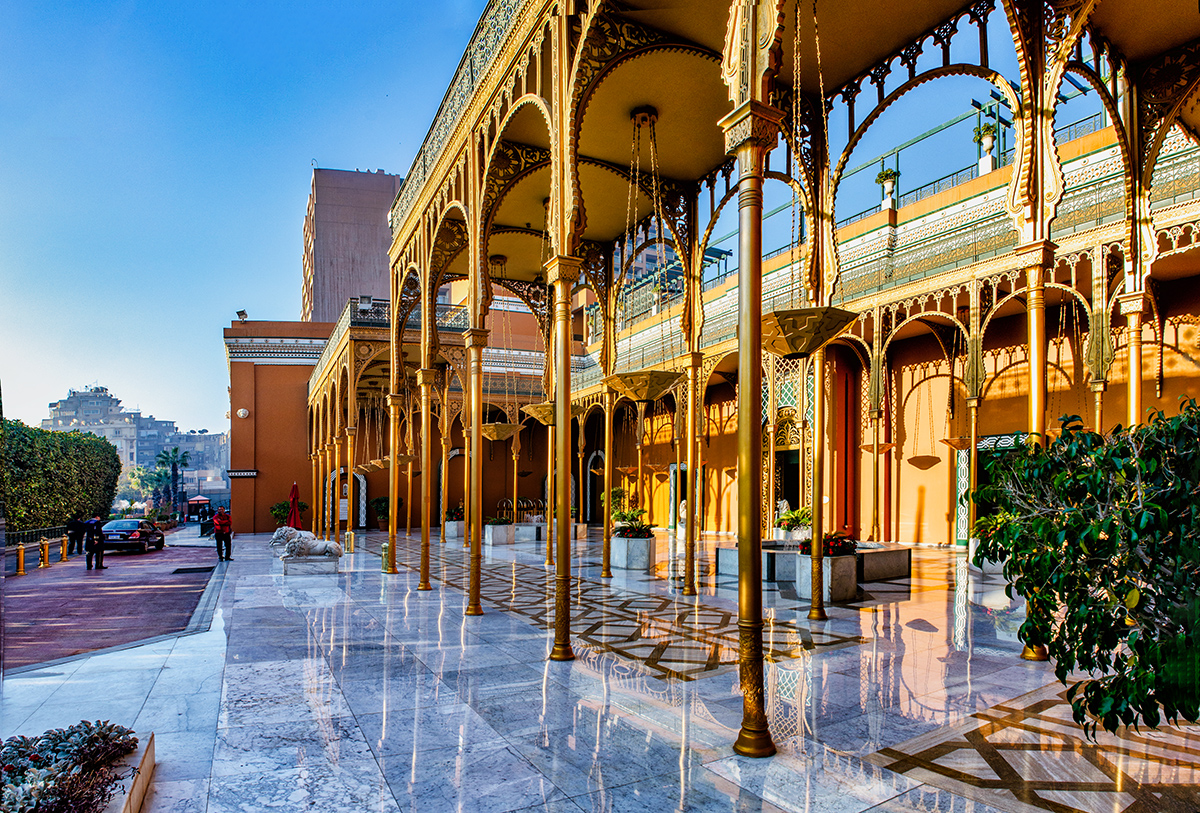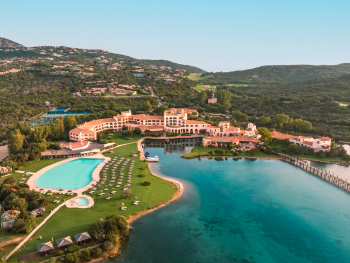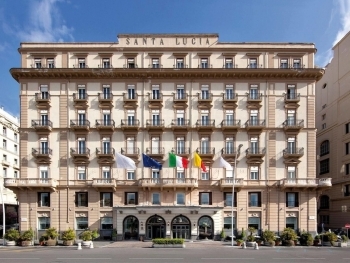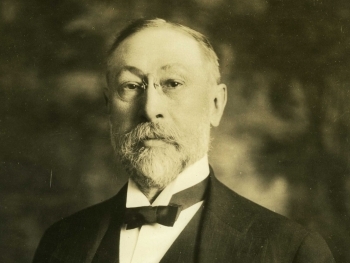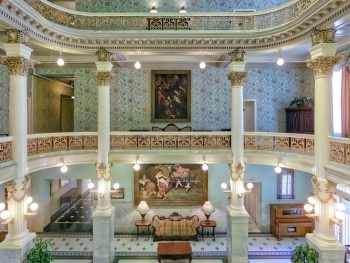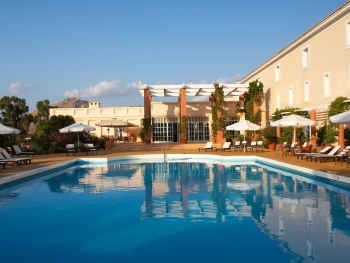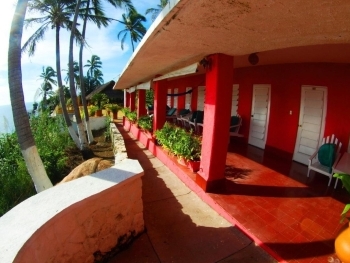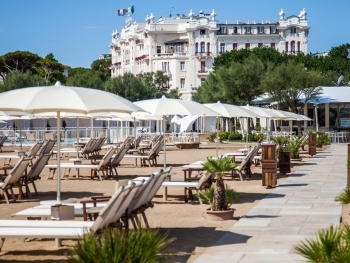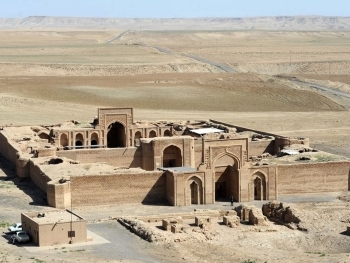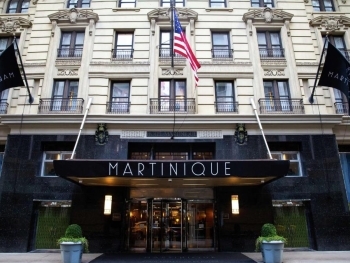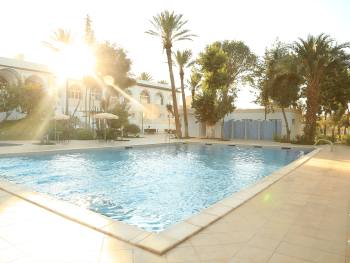The Cairo Marriott Hotel boasts a history as rich and captivating as any treasure trove. Its heart lies in the Ghezireh Palace, a former residence of Khedive Ismail, a ruler of Egypt. Originally built to impress Empress Eugenie of France in 1863, the palace has transformed over the years, becoming a luxurious hotel while retaining its historic charm.
A Jewel for the Empress:
Imagine a grand vision taking shape - a palace fit for royalty. Khedive Ismail, eager to dazzle the French Empress Eugenie during the Suez Canal inauguration, embarked on this ambitious project. German architect Julius Franz (later Franz Bey) was entrusted with the task. Construction began in 1863, and the palace drew inspiration from Islamic architecture, evident in the use of marble and intricate mashrabiya work. By 1 868, with the help of Abdin Palace designer De Curel Del Rosso, the palace stood complete.
A Parisian Dream in Cairo:
The interiors were a testament to opulence. The finest furnishings were imported directly from Paris, reflecting the grandeur of the Empress's own Tuilerie Palace apartments. French landscape architect Barrillet Deschamps wove his magic, transforming the entire island into a breathtaking formal park. The existing palace and kiosk of Mohamed-Aly were seamlessly integrated into the design, creating a cohesive landscape masterpiece.
A Blend of East and West:
The U-shaped salamlek, the formal reception area, presented a fascinating fusion of styles. European baroque elements like high rectangular windows and Renaissance cornices coexisted with traditional Islamic arches and decorative motifs. These arches, crafted from cast iron, were produced in Germany and assembled by German workers brought specifically for the project.
German Precision Meets Egyptian Grandeur:
The renowned German designer Carl Wilhelm von Diebitsch took the decoration to another level. Furniture, draperies, and even the gilded stucco decorations were meticulously prefabricated in his Berlin workshop. Once completed, these elements were shipped to Cairo, a testament to meticulous planning and engineering. Many of von Diebitsch's creations, including the elaborate decorations in the current Marriott ballrooms, continue to captivate visitors today.
A Legacy of Opulence:
The palace's cost was staggering for its time. According to Aly Mubarak, the minister of public works, it exceeded three-quarters of a million Egyptian pounds. This did not include the colossal landscaping efforts, which involved reinforcing the riverbanks and protecting the vast palace grounds from floods. The completed palace, stretching 147 meters, was truly a sight to behold, as Franz himself declared it "the most beautiful building of modern Arabic style in its category."
From Palace to Hotel:
By 1880, Ismail's financial woes led to the palace being sold to a hotel chain. Reborn as the Gezira Palace Hotel, it rivaled the famed Shepheard's Hotel in luxury, even sharing the same management for a while. The expansive gardens were divided, with a portion becoming the Gezira Sporting Club, encompassing the racecourse and polo field that once graced the royal residence.
Transformations Through Time:
The 20th century saw further changes. In 1902, Ismail's old fish grotto was transformed into a public garden boasting rare trees and an aquarium. The palace itself transitioned to a private residence under Prince Michel Lutfallah in 1908. The revolution of 1952 led to its sequestration, followed by a brief stint as the Omar Khayyam Hotel in 1962, complete with rather unsightly makeshift cabins in the gardens.
The Marriott Era and Beyond:
Finally, in the 1970s, the property was entrusted to Marriott Hotels. They embarked on a meticulous restoration, preserving the historic core of the Ghezireh Palace while equipping it with modern amenities befitting a five-star establishment. To cater to growing demand, two skyscrapers were constructed, creating the present-day Cairo Marriott Hotel.
Today, the Cairo Marriott Hotel stands as a testament to a bygone era of opulence. It offers guests a chance to experience a unique blend of history and modern luxury, all within the captivating embrace of the Ghezireh Palace's legacy.
